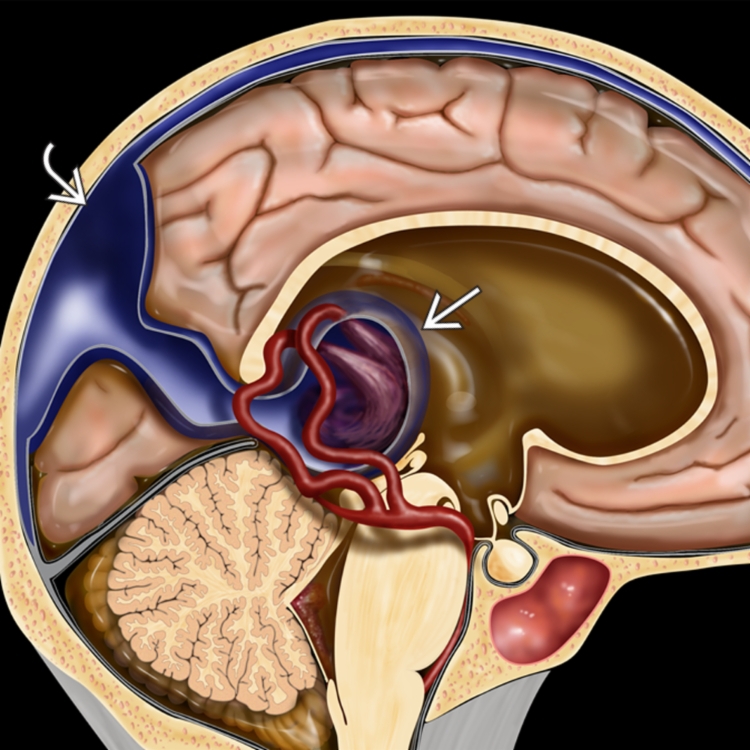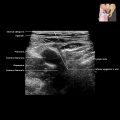KEY FACTS
Terminology
- •
Vein of Galen aneurysmal malformation (VGAM) is deep cerebral arteriovenous fistula
Imaging
- •
Elongated midline cystic structure
- ○
Extends from area behind 3rd ventricle posteriorly toward occiput
- ○
Drains via straight sinus or superior sagittal sinus
- ○
- •
Flow on color Doppler with arterialized venous flow on pulsed wave tracing
- •
Other brain findings include both destructive (e.g., porencephaly) or developmental (e.g., migrational) lesions
- •
Serial US utilized to evaluate for developing hydrops or intracranial parenchymal damage
Top Differential Diagnoses
- •
Arachnoid cyst: May have similar grayscale appearance but no flow on color Doppler
Clinical Issues
- •
Up to 80% of fetal cardiac output may be diverted to cerebral circulation
- •
Presence of any associated finding confers poor outcome
- ○
High mortality; survivors with neurologic or cardiac impairment
- ○
Most common associated findings include cardiomegaly (66.7%) and ventriculomegaly (38.9%)
- ○
Even mild cardiomegaly correlated with poor outcome
- ○
- •
Better prognosis for isolated VGAM without other findings
- •
At birth, vascular shunt usually increases
- ○
Cessation of flow to low-resistance placenta
- ○
Scanning Tips
- •
Always use color and pulsed Doppler for any cystic-appearing brain mass
- •
Perform detailed views of brain parenchyma
- ○
High-flow state “steals” blood from surrounding developing brain, resulting in ischemic damage
- ○
 . In this example, it drains into the superior sagittal sinus
. In this example, it drains into the superior sagittal sinus  .
.
 typical of high flow through a fistula. Up to 80% of fetal cardiac output may be diverted to the brain. This high-flow state eventually leads to cardiac decompensation.
typical of high flow through a fistula. Up to 80% of fetal cardiac output may be diverted to the brain. This high-flow state eventually leads to cardiac decompensation.
Stay updated, free articles. Join our Telegram channel

Full access? Get Clinical Tree








